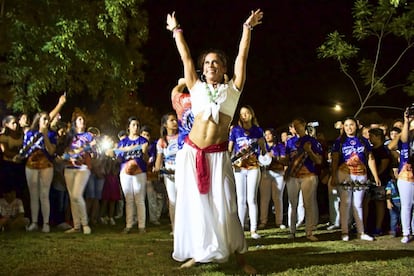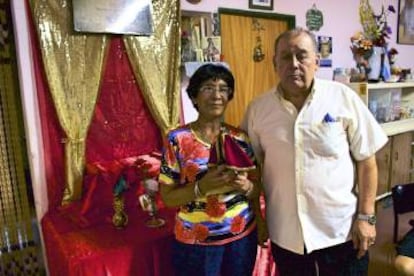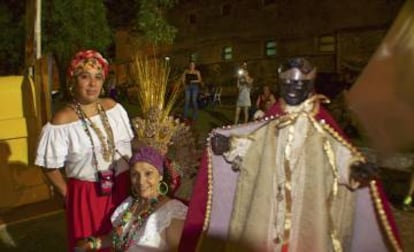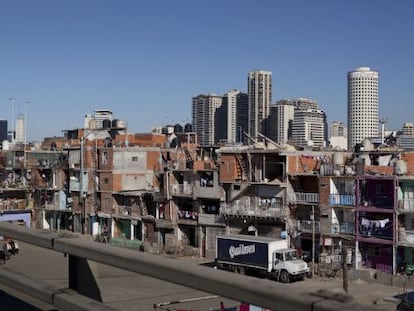Where are Argentina’s black people?
In the northern province of Corrientes, locals are reviving deep-rooted African traditions
Why are there no black people in Argentina, unlike Brazil, Colombia, or even Bolivia and neighboring Uruguay? Studies show that between 4% and 6% of Argentineans have African genes, but few people there are aware of their country’s African roots, which were largely cut through a series of epidemics and wars that killed huge numbers of what was a sizeable African population until the 19th century.

On January 6, the city of Corrientes, some 1,000 kilometers north of Buenos Aires, celebrates its African roots through an ongoing revival of the 200-year-old festival of San Baltasar. This blend of Christianity and the Afro-Brazilian cult of Candomblé commemorates a figure who is also one of the Three Wise Kings of the Catholic tradition, and is the only festival created and preserved by Argentina’s people of African descent.
The province of Corrientes, which lies between the Paraná and Uruguay rivers and is crisscrossed by other waterways, was inaccessible until well into the 20th century, which in part explains why so little is known of its African heritage.
Corrientes’ black population was wiped out by war and disease
In the Camba Cuá neighborhood of the city Corrientes is a large house belonging to Raimundo Molina, a Spanish landowner who owned many slaves. Anthropologist María Belén Zaninovich has studied the history of the house, where she has found artifacts with African origins, as well as identifying the descendants of the slaves who worked the land here until the mid-19th century.
“Skin is rapidly whitened, but the curly hair and ear lobes characteristic of many people here shows Corrientes’ black heritage,” she says. Osvaldo Caballero, who at this time of year is wearing the red and yellow associated with San Baltasar, but also with the local lottery and the soccer team Boca Unidos, fits Zaninovich’s description. He claims to be descended from slaves being taken from Uruguay to Paraguay. “Corrientes has become white,” he says. “Nobody wants to say they are descended from black slaves because it doesn't give them status. That is why blackness here is really hidden away,” he explains.

Cabellero has played a key role in the revival of the festival of San Baltasar in Camba Cuá, which is now an upscale area dotted with gardened houses watched over by private security staff. Each January 6, the brotherhood of San Baltasar organizes a parade through the neighborhood accompanied by drums bearing images of other saints.
Juliana Rodríguez, aged 71, brings along a 260-year-old statuette of San Baltasar carved out of walnut, she says she inherited from her aunt and which she held onto for the two decades when the festival was banned under Argentina’s military dictatorship. “My great-grandfather was a black man from Brazil who deserted from the army and came to Corrientes,” she says.
Historian Felipe Pigna says that Corrientes’ black population was largely wiped out after its menfolk were used as “cannon fodder” during Argentina’s wars of independence and following civil wars, and then throughout the six-year conflict with Paraguay that began in 1865, along with cholera and yellow fever epidemics in 1861 and 1871, respectively.

“What’s more, the birth rate was very low compared to other Latin American societies. The slave owners did not want their slaves marrying or having children, because this would prevent them from working, and there was always the risk of death during childbirth,” says Pigna.
There are also festivities in the city of Empedrado, some 50 kilometers away, that use the charanda, or zemba, a two-sided drum of African origin. The instrument is more than a meter long and carved out of a single piece of tree trunk that is then covered with dog or goat skin.
Norberto Pablo Cirio is an anthropologist at Argentina’s National Musicology Institute who has been studying San Baltasar for 30 years. He says the festivities are more complex than “a black festival without blacks” and in reality reflect Argentina’s blend of cultures, whereby San Baltasar’s African origins have been “appropriated” by other groups in society.
English edition by Nick Lyne.
Tu suscripción se está usando en otro dispositivo
¿Quieres añadir otro usuario a tu suscripción?
Si continúas leyendo en este dispositivo, no se podrá leer en el otro.
FlechaTu suscripción se está usando en otro dispositivo y solo puedes acceder a EL PAÍS desde un dispositivo a la vez.
Si quieres compartir tu cuenta, cambia tu suscripción a la modalidad Premium, así podrás añadir otro usuario. Cada uno accederá con su propia cuenta de email, lo que os permitirá personalizar vuestra experiencia en EL PAÍS.
¿Tienes una suscripción de empresa? Accede aquí para contratar más cuentas.
En el caso de no saber quién está usando tu cuenta, te recomendamos cambiar tu contraseña aquí.
Si decides continuar compartiendo tu cuenta, este mensaje se mostrará en tu dispositivo y en el de la otra persona que está usando tu cuenta de forma indefinida, afectando a tu experiencia de lectura. Puedes consultar aquí los términos y condiciones de la suscripción digital.










































